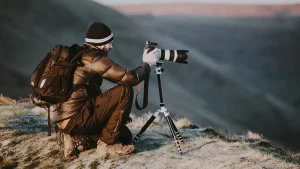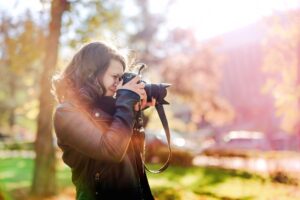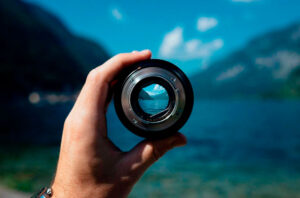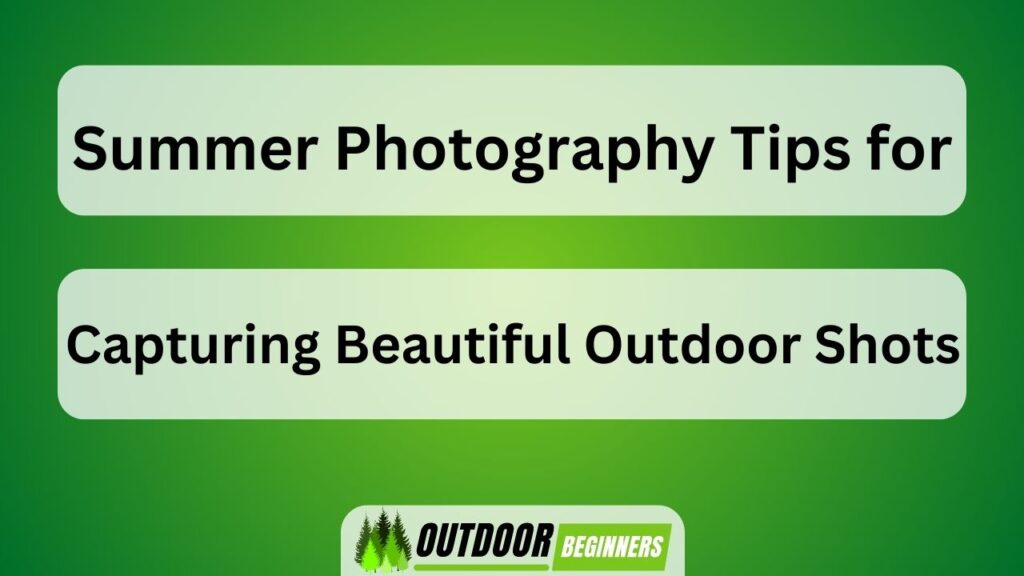Summer is like a canvas, bursting with vibrant colors and breathtaking landscapes. At our fingertips, we have the power to capture these moments and preserve them forever through photography.
In this article, we will share essential tips and techniques for capturing beautiful outdoor shots during the summer season. From choosing the right camera gear to mastering exposure and composition, we’ll guide you on a journey to elevate your photography skills.
So grab your camera and get ready to dive into the world of stunning summer photography!
Key Takeaways Summer Photography Tips for Capturing Beautiful Outdoor Shots
- Consider low light photography and macro photography
- Understand the difference between natural and artificial lighting
- Use filters and exposure compensation for optimal exposure settings
- Experiment with creative lighting techniques and angles for unique and vibrant results
Choosing the Right Camera Gear
You’ll want to make sure you have the right camera gear for taking stunning outdoor shots this summer. When it comes to photography, two important aspects to consider are low light photography and macro photography.

For low light photography, a camera with good ISO performance is crucial. This will allow you to capture sharp and well-exposed images even in dim lighting conditions. Look for cameras that have a wide ISO range and perform well at higher ISO settings.
In addition, if you’re interested in capturing intricate details of small subjects like flowers or insects, macro photography is your go-to. A dedicated macro lens is ideal for this type of photography as it allows you to get up close and personal with your subject while maintaining sharpness and clarity.
Don’t forget about the importance of a sturdy tripod for both low light and macro photography. It will help eliminate camera shake and ensure crisp images.
Mastering Exposure and Lighting
When it comes to mastering exposure and lighting in photography, there are several key points to consider.
First, understanding the difference between natural and artificial lighting is essential in order to choose the right setting for your shots.

Second, finding the right balance of exposure settings can make or break a photograph, so it’s important to know how to adjust aperture, shutter speed, and ISO accordingly.
Lastly, incorporating creative lighting techniques can add depth and drama to your images. Whether it’s using backlighting for a stunning silhouette or experimenting with different types of light sources for unique effects.
Natural Vs. Artificial Lighting
To capture the best outdoor shots, try experimenting with natural and artificial lighting to enhance the mood of your photographs. When it comes to lighting, there are pros and cons to both natural and artificial sources.

Natural light can create a soft and warm glow that is perfect for capturing scenic landscapes or portraits. On the other hand, artificial light allows for more control over the intensity and direction of light, making it ideal for creating dramatic effects or highlighting specific subjects.
When photographing movement in outdoor settings, utilizing different lighting techniques can produce stunning results. For fast-moving subjects like sports or wildlife, high-speed sync flash can freeze action while maintaining proper exposure. Alternatively, using long exposures combined with natural light can create beautiful motion blur effects for subjects like waterfalls or flowing clouds.
Balancing exposure settings plays a crucial role in achieving well-lit photos regardless of the lighting source used.
Transition: Now that we have discussed lighting options, let’s move on to understanding how to balance exposure settings for optimal results in your summer photography adventures.
Balancing Exposure Settings
Now that we’ve covered lighting options, it’s important to understand how exposure settings can be balanced for optimal results in your summer photography adventures. Whether you’re shooting landscapes or capturing portraits in challenging lighting conditions, here are some techniques to help you achieve the perfect exposure:

- Using filters for exposure control: Neutral density (ND) filters can reduce the amount of light entering your camera, allowing you to use longer exposures and create stunning effects like silky smooth waterfalls or dreamy clouds.
- Mastering exposure compensation: Adjusting the exposure compensation dial allows you to brighten or darken your image without changing the overall exposure settings. This technique is handy when dealing with high contrast scenes.
- Bracketing for HDR photography: Bracketing involves taking multiple shots at different exposures and then merging them together using software. This technique helps capture all the details in both highlight and shadow areas.
- Spot metering and focus lock: By using spot metering, you can accurately measure the light on a specific area of your subject. Combine this with focus lock to ensure proper exposure on your main subject while shooting against bright backgrounds.
Creative Lighting Techniques
Using creative lighting techniques can add depth and drama to your photographs. When it comes to low light photography, using reflectors is a game-changer. Reflectors bounce light back onto the subject, helping to eliminate harsh shadows and create a more even lighting situation.
We’ve found that silver or white reflectors work best for outdoor shoots, as they provide a natural-looking fill light. Positioning the reflector strategically can also enhance the overall composition of your image. By angling it towards the subject from different directions, you can create interesting highlights and shadows that add texture and dimension to your photos.
Experiment with different angles and distances to achieve the desired effect. Don’t be afraid to play around with reflective surfaces like water or mirrors as well – they can produce stunning results in low light conditions.
Composition Techniques for Stunning Shots
Remember, incorporating the rule of thirds can greatly enhance your composition in outdoor photography. By dividing your frame into three equal parts both horizontally and vertically, you can create a more balanced and visually appealing image. But that’s not all! Here are a few more composition techniques to take your outdoor shots to the next level:
- Leading lines: Use natural or man-made lines like roads, paths, or fences to guide the viewer’s eye through the photo.
- Framing: Frame your subject with elements like trees or archways to add depth and draw attention.
- Symmetry: Capture symmetrical scenes for an aesthetically pleasing effect.
- Negative space: Leave empty spaces around your subject to create a sense of simplicity and focus.
With these composition techniques in mind, you’ll be well on your way to capturing stunning outdoor shots that truly showcase the beauty of nature.
Capturing the Beauty of Nature
To truly showcase nature’s beauty, we recommend incorporating different composition techniques into your photographs. When it comes to capturing wildlife, patience is key. Take the time to observe their behavior and find unique angles that highlight their natural habitat. Consider using the rule of thirds to create balance and interest in your shots. Experiment with different perspectives, such as getting down low or shooting from a higher vantage point, to add depth and dimension to your images.
Photographing landscapes requires a similar approach. Look for leading lines that draw the viewer’s eye into the scene, like winding paths or rivers. Use foreground elements, such as rocks or flowers, to create visual interest and guide the viewer’s gaze through the image. Don’t forget about lighting – early morning or golden hour light can enhance the colors and textures of a landscape.
By applying these composition techniques when capturing wildlife and photographing landscapes, you’ll be able to capture the true beauty of nature in your photographs this summer.
Now let’s explore some creative ways to capture those summer vibes!
Creative Ways to Capture Summer Vibes
As summer arrives, we’re always on the lookout for ways to capture its vibrant colors and unique vibes.
In this discussion, we’ll explore techniques to enhance our photography skills by capturing the stunning hues of summer.
Additionally, we’ll also delve into the art of finding unique angles to bring creativity and a fresh perspective to our summer shots.
Get ready to elevate your photography game and make your summer memories come alive!
Capturing Vibrant Summer Colors
Capturing vibrant summer colors is essential for creating stunning outdoor photographs. The vivid hues of the season can truly bring your images to life. To make the most of these vibrant colors, here are a few tips:
- Shoot during golden hour: The warm, soft light during sunrise and sunset can intensify the colors in your photos, especially when capturing a vibrant sunset.
- Look for water reflections: Bodies of water such as lakes or rivers can provide stunning reflections that enhance the color palette of your images. Experiment with different angles to capture captivating mirror-like effects.
- Utilize natural elements: Incorporate colorful flowers, lush green foliage, or even brightly painted walls into your compositions to add pops of vibrant color.
- Play with contrasting colors: Seek out complementary color combinations like blue and orange or purple and yellow to create visually striking images.
By following these tips, you’ll be able to capture the true essence of summer through its vibrant colors.
Now let’s explore how unique angles can further enhance our creative vision.
Unique Angles for Creativity
Using unique angles can add a creative and dynamic perspective to your photographs. When it comes to low light situations, finding interesting angles becomes even more important.
For example, capturing a silhouette against a colorful sunset can create a stunning visual effect. Another technique is incorporating aerial photography into your outdoor shots. By using drones or climbing to higher vantage points, you can capture breathtaking views from above. Aerial shots are particularly effective when photographing landscapes or large crowds of people at events.
Now that we’ve explored how unique angles can enhance your outdoor photography, let’s move on to some tips for photographing people outdoors and capturing their natural beauty in different environments.
Tips for Photographing People Outdoors
When photographing people outdoors, focus on finding the best natural lighting. This will help create stunning outdoor portrait photography and capture candid shots in natural settings.
Here are some tips to make your outdoor portraits truly shine:
- Golden hour: Shoot during the hours just after sunrise or before sunset for soft, warm light.
- Use reflectors: Reflectors bounce sunlight back onto your subject’s face, reducing shadows and creating a more even light.
- Seek shade: Direct sunlight can be harsh and cause unflattering shadows. Look for shaded areas where your subject will be evenly lit.
- Pay attention to backgrounds: Choose locations with interesting elements that complement your subject without distracting from them.
Now that you have captured beautiful outdoor photos, it’s time to move on to the next step – editing and post-processing tips.
Editing and Post-Processing Tips
Now that you’ve captured some stunning outdoor shots of people, it’s time to move on to the editing and post-processing stage. This is where advanced retouching techniques come into play, allowing you to enhance the natural elements in your photographs.
One technique you can use is called dodging and burning. This involves selectively lightening or darkening certain areas of your image to create more depth and dimension. By brightening up shadows or darkening highlights, you can bring out the details in your subject and make them pop against the background.
Another useful technique is color correction. Sometimes, outdoor lighting conditions can cause colors to appear washed out or inaccurate. With color correction tools, you can adjust the hues, saturation, and vibrancy of your images to achieve a more realistic representation of the scene.
Lastly, don’t forget about sharpening! Sharpening helps to enhance the fine details in your photographs, making them look crisp and clear.
Sharing and Showcasing Your Outdoor Shots
To showcase your stunning outdoor shots, you can easily create an online portfolio or share them on social media platforms. Sharing your photos with the world is a great way to gain recognition for your work and connect with other photography enthusiasts.
Here are some techniques to help you effectively share and showcase your outdoor shots:
- Utilize hashtags: Using relevant hashtags will increase the visibility of your photos and attract a wider audience.
- Engage with outdoor photography communities: Joining online communities focused on outdoor photography allows you to connect with like-minded individuals, get feedback on your work, and discover new inspiration.
- Collaborate with others: Partnering with fellow photographers or collaborating on projects can lead to exposure and provide opportunities for growth.
- Submit to photo contests and publications: Participating in contests or submitting your work to magazines can provide valuable exposure and recognition.
Frequently Asked Questions
How Do I Protect My Camera Gear From the Summer Heat and Humidity?
To protect our camera gear from the summer heat and humidity, we should store it in a cool and dry place when not in use. Using a camera bag with moisture-resistant compartments can also help prevent damage.
What Are Some Tips for Photographing Fast-Moving Subjects, Such as Birds or Athletes, Outdoors?
When photographing fast-moving subjects like birds or athletes, we’ve found that using a high shutter speed and continuous autofocus helps capture the action. Additionally, tracking the subject and utilizing burst mode can result in stunning action shots.
Are There Any Specific Composition Techniques That Work Best for Landscapes or Seascapes?
When it comes to landscapes or seascapes, we’ve found that incorporating leading lines can create a sense of depth and guide the viewer’s eye. Additionally, shooting during the golden hour lighting can enhance colors and add a warm glow to your photos.
How Can I Capture the Vibrant Colors of Flowers and Plants in My Outdoor Shots?
To capture the vibrant colors of flowers and plants in our outdoor shots, we use macro photography techniques. By getting up close, we can reveal the intricate details and rich hues that make these subjects truly come alive.
What Are Some Creative Ways to Incorporate Water Into My Summer Outdoor Photography?
To incorporate water into our summer outdoor photography, we can get creative with water reflections and explore underwater photography techniques. These techniques add a unique and captivating element to our shots, making them more visually interesting and engaging.
Conclusion
In conclusion, capturing beautiful outdoor shots during the summer is an exhilarating and rewarding experience.
By choosing the right camera gear, mastering exposure and lighting, and using composition techniques, you can elevate your photography skills to new heights.
Don’t be afraid to get creative and experiment with different ways to capture the essence of summer.
Whether it’s photographing nature or people outdoors, remember that editing and post-processing play a crucial role in enhancing your images.
So grab your camera, chase the golden hour, and let your creativity shine through!
As the saying goes, ‘The world is your oyster,’ so go out there and capture its beauty with your lens.




